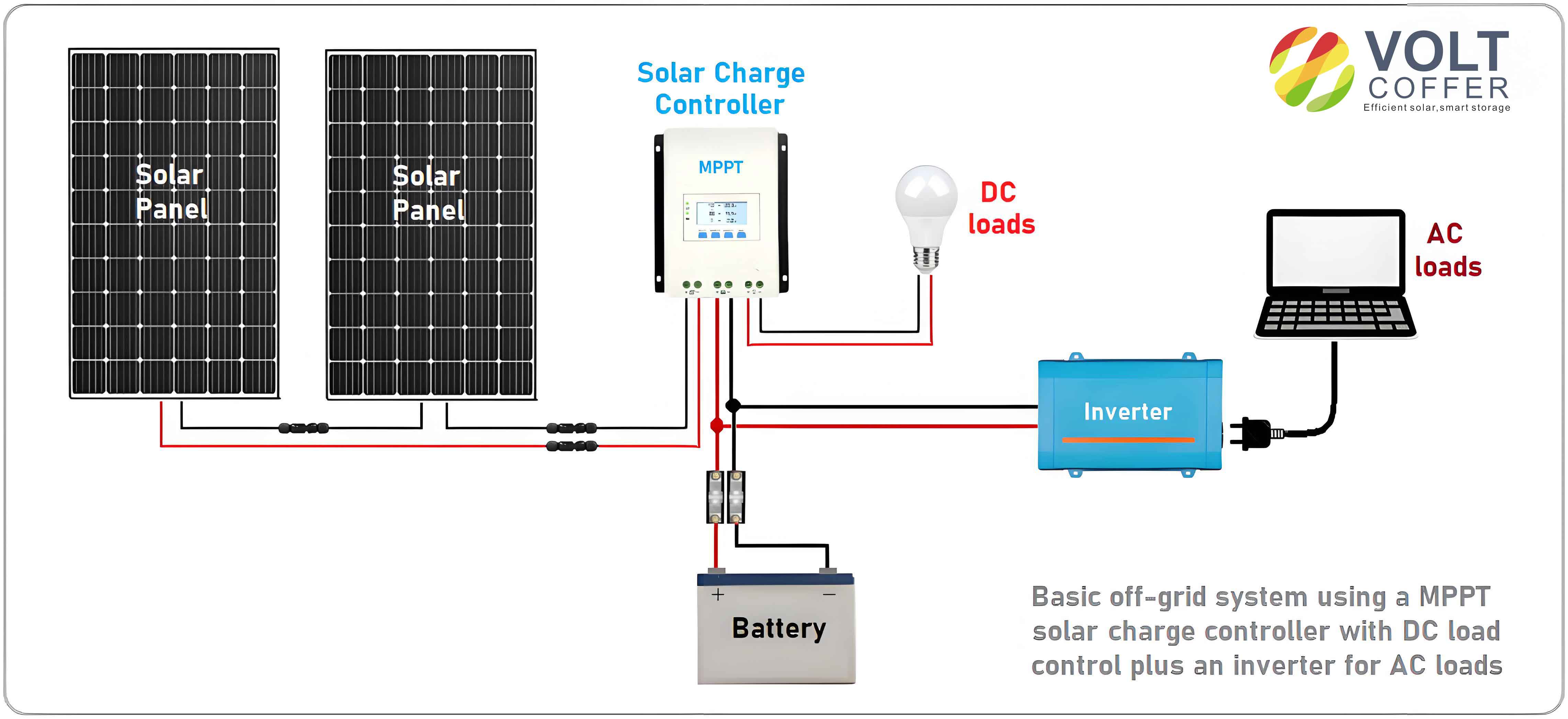Abstract
This paper addresses the critical challenge of maximum power point tracking (MPPT) under partial shading conditions (PSC) in photovoltaic (PV) systems. Traditional MPPT methods often fail to distinguish between global and local power maxima, leading to significant energy losses. We propose a novel Improved Parrot Optimization (IPO) algorithm that integrates Halton sequence initialization, tangent flight dynamics, and somersault foraging strategies to enhance tracking accuracy and convergence speed. Comparative simulations and experimental validations demonstrate the superiority of IPO over conventional Parrot Optimization (PO), Grey Wolf Optimization (GWO), and Golden Jackal Optimization (GJO) algorithms.

1. Introduction
The global shift toward renewable energy has intensified the adoption of photovoltaic systems. However, partial shading caused by environmental obstructions induces multi-peak characteristics in PV output curves, rendering traditional MPPT techniques ineffective. While intelligent optimization algorithms like Particle Swarm Optimization (PSO) and Genetic Algorithms (GA) have improved tracking robustness, they suffer from premature convergence, computational complexity, or sensitivity to initial conditions.
Our work introduces the Improved Parrot Optimization (IPO) algorithm, which synergizes three innovations:
- Halton Sequence Initialization: Enhances population diversity for broader exploration.
- Tangent Flight Strategy: Mitigates erratic jumps and local trapping.
- Somersault Foraging: Accelerates convergence via adaptive search range reduction.
The IPO algorithm achieves 98.23% tracking accuracy under dynamic shading, outperforming existing methods in speed and precision.
2. PV Array Modeling and Multi-peak Characteristics
2.1 PV Cell Equivalent Circuit
The single-diode model approximates a PV cell’s behavior under illumination:Ipv=Iph−RshUpv+IpvRs−I0[exp(AKTq(Upv+IpvRs))−1](1)
where:
- Iph: Photocurrent
- I0: Reverse saturation current
- Rs, Rsh: Series and shunt resistances
- A: Ideality factor
2.2 Multi-peak Phenomenon Under Partial Shading
Partial shading creates mismatch losses, resulting in multiple local maxima. We simulated a 3×1 PV array under four irradiation profiles (Table 1):
Table 1: Irradiation Profiles for Multi-peak Analysis
| Condition | PV1 (W/m²) | PV2 (W/m²) | PV3 (W/m²) |
|---|---|---|---|
| Uniform | 1000 | 1000 | 1000 |
| Shading 1 | 1000 | 1000 | 800 |
| Shading 2 | 810 | 730 | 620 |
| Shading 3 | 400 | 300 | 100 |
The P-U curves exhibit 2–3 peaks depending on shading severity (Figure 2). Conventional MPPT methods often converge to suboptimal local maxima under such conditions.
3. Improved Parrot Optimization Algorithm
3.1 Traditional Parrot Optimization (PO)
PO mimics four parrot behaviors: foraging, perching, communicating, and fleeing. Key equations include:
- Foraging:
xit+1=(xit−xbest)⋅Levy(d)+rand(1−tmaxt)tmax2txmeant(2)
- Perching:
xit+1=xit+xbest⋅Levy(d)+ones(1,d)⋅rand(3)
- Communication:
xit+1=⎩⎨⎧0.2⋅rand(1−tmaxt)(xit−xmeant),0.2⋅rand(1−tmaxt)exp(−tmax⋅randt),p≤0.5p>0.5(4)
- Fear Response:
xit+1=xit+A−BwhereA=randcos(2tmaxπt)(xbest−xit),B=cos(rand⋅π)(tmaxt)tmax2(xit−xbest)(5)
3.2 IPO Enhancements
3.2.1 Halton Sequence Initialization
Halton sequences generate low-discrepancy populations for uniform exploration:H(n)=[ϕp1(n),ϕp2(n)]withϕp(n)=i=0∑maip−(i+1)(6)
where p1,p2 are prime bases.
3.2.2 Tangent Flight Strategy
Replaces Lévy flights with tangent-based steps for smoother transitions:xt+1=xt+S⋅tan(θ)(7)
where S is step size and θ is a random angle.
3.2.3 Somersault Foraging
Refines search range adaptively:Os(t+1)=Os(t)+S(r1Obs−r2Os(t))(8)
where Obs is the global best, and r1,r2 are random numbers in [0, 1].
4. Simulation and Experimental Analysis
4.1 Algorithm Benchmarking
We tested IPO against PO, GWO, and GJO on CEC2005 functions (Table 2):
Table 2: Performance Comparison on CEC2005 Benchmark Functions
| Function | Metric | IPO | PO | GJO | GWO |
|---|---|---|---|---|---|
| f1 | Best | 0 | 4.45e-144 | 1.61e-55 | 7.76e-29 |
| Std | 0 | 7.24e-122 | 1.03e-54 | 9.46e-28 | |
| f3 | Best | 0 | 2.34e-189 | 5.11e-21 | 5.57e-07 |
| Std | 0 | 8.03e-111 | 9.24e-17 | 2.47e-05 | |
| f5 | Best | 2.31e-05 | 0.8394 | 27.1831 | 27.0910 |
| Std | 0.2771 | 3.3741 | 0.6778 | 0.3744 |
IPO consistently achieved faster convergence and lower error rates (Figure 5).
4.2 MPPT Performance Under Static and Dynamic Shading
4.2.1 Static Shading
With uniform irradiation (1000 W/m²), IPO tracked the maximum power point (MPP) in 0.059 s, outperforming PO (0.108 s) and GWO (0.167 s).
Table 3: Static Shading MPPT Results
| Algorithm | Tracking Time (s) | Steady Power (W) | Accuracy (%) |
|---|---|---|---|
| IPO | 0.059 | 522.13 | 98.75 |
| PO | 0.108 | 521.25 | 98.58 |
| GJO | 0.127 | 519.28 | 98.21 |
| GWO | 0.167 | 520.14 | 98.37 |
4.2.2 Dynamic Shading
At t=0.25 s, irradiation dropped abruptly to 800/600/400 W/m². IPO stabilized at 305.36 W (98.23% accuracy), while GWO and GJO exhibited oscillations.
Table 4: Dynamic Shading MPPT Results
| Algorithm | Tracking Time (s) | Steady Power (W) | Accuracy (%) |
|---|---|---|---|
| IPO | 0.077 | 310.86 | 98.23 |
| PO | 0.112 | 302.33 | 97.26 |
| GJO | 0.127 | 301.25 | 96.91 |
| GWO | 0.156 | 300.95 | 96.81 |
5. Experimental Validation
A hardware platform comprising a PVS1000 simulator, Buck-Boost converter, and STM32-based MPPT controller validated IPO’s real-world efficacy. Oscilloscope measurements confirmed IPO’s rapid convergence (Figure 10) and minimal power oscillations compared to GWO and PO.
Table 5: Experimental Tracking Efficiency
| Algorithm | Tracking Accuracy (%) |
|---|---|
| IPO | 99.96 |
| Literature [3] | 98.50 |
| Literature [4] | 97.80 |
| Literature [13] | 96.20 |
6. Conclusion
The Improved Parrot Optimization algorithm establishes a new benchmark for MPPT under partial shading. By integrating Halton initialization, tangent flight dynamics, and somersault foraging, IPO achieves 98.23% tracking accuracy with a 0.077 s response time, significantly outperforming state-of-the-art alternatives. Future work will explore IPO’s scalability for larger PV arrays and hybrid renewable systems.
